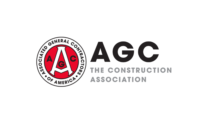Davis Wade Stadium, home of the Mississippi State University (MSU) Bulldogs football team, is located in Starkville, Miss. Originally constructed in 1914, it is the second-oldest stadium in Division I football—only Atlanta’s Bobby Dodd Stadium, of Georgia Tech University, has years on it.
To celebrate over 100 years of gridiron glory, Davis Wade Stadium has a modern new look created with BENCHMARK by Kingspan insulated metal panels.
Decades of Expansion
In 1920, the student body adopted a resolution to name the school’s football venue Scott Field, in honor of Don Scott, an Olympic Sprinter and former Mississippi State football player. Prior to the 2000 season, it was named Davis Wade Stadium in recognition of longtime MSU supporter Floyd Davis Wade Sr., whom made a large financial contribution toward stadium expansion that increased the facility’s capacity to 61,337. The stadium was renamed Davis Wade Stadium, however, the playing turf retained the name Scott Field. The official name of the facility today is Davis Wade Stadium at Scott Field.
For over a century, Mississippi State University football has been played in this one location. With each decade, new expansion, and renovation programs were completed as the popularity of college football increased. In 2012, construction began on a $75-million expansion of the north end zone and renovation of the west side concourse. This work, completed in August of 2014, increased the capacity of the stadium, created new concession areas and restrooms, and built a new west side concourse. As a result of all this construction, Davis Wade Stadium is now the largest football stadium in Mississippi.
Using modern insulated metal panel (IMP) technology, Davis Wade Stadium now has a striking facade that complements the historic elegance of existing campus architecture. Construction and renovation design for the Davis Wade Stadium expansion was performed by regional architect LPK of Meridian, Miss., and national sports consultants 360 Architecture of Kansas City. Though the project was phased over two years, construction was sequenced to enable MSU’s football team to use the stadium without interruption.
The Right Panel for the Project
Thick panels in various widths, with a smooth finish, were specified to satisfy the architect’s requirements. The design program called for IMPs to have the size, color, and details needed for inclusion of one of the largest high-definition Jumbotron video screens in the nation. More than 30,000 square feet of insulated metal panels were installed on this project.
This project presented several design challenges and requirements. The architect wanted a building material that allowed for maximum design flexibility, were lightweight, but would stand up to the elements, meet wind load requirements, and had a long lifespan while maintaining a new-looking presence. All of those design challenges were resolved by using BENCHMARK by Kingspan’s Designwall 2000 wall panel system.
Insulated metal panels now seem to be the preferred choice of architects for sporting structures, such as the Davis Wade Stadium. According to James Rickman, AIA, CSI, and Southeast regional sales manager for Kingspan, IMP products will continue to be installed as the standard cladding material on commercial buildings in the future. “Architects have been, and are, realizing the true benefits of a total building envelope solution with single-component insulated metal panels,” said Ruckman. “This single building material meets architects’ requirements for aesthetics, exterior skin, weather barrier, and insulation.”
The wall panel system features a double-gasket shiplap joint that offers protection against air and water penetration. With a core of continuous, rigid insulation, they offer industry leading R- and U-values with superior airtightness performance. With tested R-Values of up to 28, these high performance panels create an envelope that greatly increases a building’s energy efficiency. Most importantly, with IMPs the insulation is on the exterior of the building structure to provide the best possible building envelope by helping reduce thermal bridging typical of built-up wall systems.
Speed of Build and Creative Freedom
It often seems that every construction project is planned for a fast track timeline. As a single-component IMP, the product allows faster on-site installation.Tilt-up, precast, or block usually require cranes and other heavy equipment to be set in place. Lightweight IMPs are often installed with forklifts or even a simple pulley system. This single factor alone greatly lowers construction costs for the owner.
Weather conditions are a significant concern with several exterior envelope systems. However, insulated metal panels can be installed any time of year, even during periods of inclement weather. This is because insulated metal panels create non-reservoir walls that do not absorb water. Brick, precast concrete, tilt-up, and other materials used for exterior walls, absorb rainwater. If moisture enters a wall cavity and is not drained or vented, mold, and mildew growth usually occurs. By eliminating inclement weather as a potential delaying factor, the owner is saving money through increased build speed and earlier project completion.
Long-Lasting Colors, Textures, and Finishes
Labor costs of installing of IMPs are further reduced because there is less need for finish trades workers, such as painters and masons. Insulated Metal Panels are produced with attractive standard and custom colors in a wide range of textures and finishes. The product’s wide palette was also a key reason for specifying Designwall 2000 because it offered numerous creative possibilities for the Davis Wade Stadium design team.
The Future Factors
The IMPs last as long as the service life of a typical commercial building. These durable panels also reduce operational costs for energy and maintenance, and offer multiple end-of-life reuse options. In fact, the exterior skins contain a substantial amount of recycled content, and each IMP is recyclable. Because these panels weigh only 3 pounds per square foot, less energy is needed for transport and installation. IMPs contribute to LEED certification programs and Path to Net-Zero Energy targets.
Each fall, the Bulldogs of Mississippi State University are proud contenders in America’s favorite sport.











